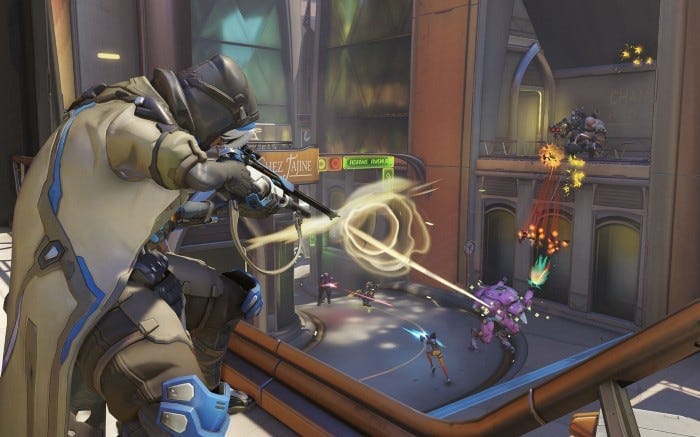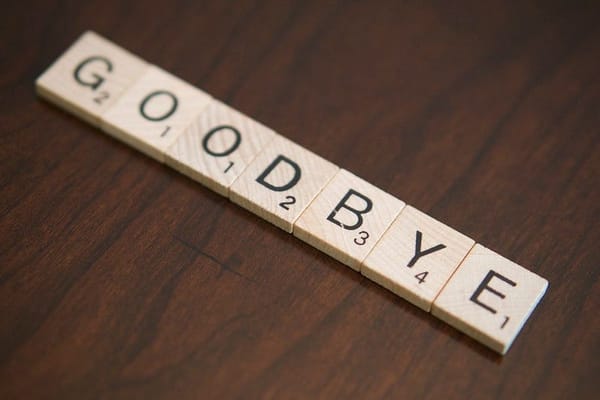A complete noob’s introduction to playing support in Overwatch 2
The role has changed in the new Overwatch sequel, but your ability to carry is easier now

Overwatch is a unique game that includes elements of MMOs to produce perhaps the most complex first person shooter in modern gaming. Next week, the game’s developer, Activision Blizzard, will release its long awaited sequel, Overwatch 2.
The sequel will feature a 5v5 PvP format with one tank, two damage heroes, and two supports. In general, the tank is responsible for taking and denying space from the other team through damage mitigation and a damage threat. Damage players are tasked with pumping as much damage into the other team and secure kills through taking angles and spamming enough damage to outlast the enemies’ ability cooldowns. Supports are the only hero class that can provide consistent healing to injured teammates, but they are also equipped with the most powerful utility in the game to turn fights.
Personally, I’m a support main with several thousand hours played in the role. Typically, support heroes are sorted into sub categories, main support and flex support. Flex supports include: Ana, Baptiste, Moira, and Zenyatta. Main supports are: Mercy, Lucio, Brigitte, and the new support Kiriko.
Flex supports typically output the most raw healing, and can often heal more than one teammate at a time. Main supports can put out short bursts of healing to multiple targets, but their main effectiveness mainly comes from their non-healing utility. Typically, your team should have one of each, but be aware, especially at low levels, of low healing combinations.
Zenyatta (or Zen) can only heal one target at a time with relatively low healing per second. Lucio can heal multiple targets but at an even lower rate of healing per second than Zen, meaning your teammates need to wait longer to reengage while waiting to get healed up. Lower level players struggle not only with using cover and positioning, but they also lack patience, meaning they will not bother waiting for their Zen/Lucio to heal them up before going back in.
If you’re a new player, never run Zen with a main support until you hit a very high rank and can play him with a Brig.
I’m getting a little ahead of myself but I’ve seen so many gold-level games lost at the hero select screen when the supports choose Lucio/Zen or even Mercy/Zen.
Utility is the key to support success
Each support hero has their own fight turning utility and learning to use it correctly will help you win more games faster. Lucio is the only hero in the game that can make your team physically move faster, and so he’s especially powerful when your team is playing short range damage heroes like Reinhardt, Reaper, and Cassidy.
Most low level Lucios will leave their aura on heal so they can rack up massive heal numbers. In Overwatch 1, one of the only forms of feedback players got was in the antiquated medal system, in which one support would get a gold medal if they did the most healing of the two, and the second support would get silver healing.
This led to many widespread misconceptions about how supports are supposed to play. After all, if a Lucio got gold healing by staying on heal aura the whole game, why would the game give a positive reinforcement to a bad decision?
This led Lucios to make bad decisions. If you’re retreating with your team’s Zarya and the other team is damaging you, the poor decision would be to leave yourself on heal aura to heal the damage. Instead, switch to speed and get yourself and the Zarya out faster so you take less damage over time.
One decision may get you a gold medal, but it will also get you killed. Your most important job is to keep yourself and as many teammates as possible alive.
Mercy’s utility comes from her damage boost. When you load her up, you get the option of left clicking to heal someone with your beam, or right clicking to damage boost. The healing can be strong in certain situations but the damage boost is overpowered. If your team is at or near full health, you should be damage boosting most of the time. It could be the difference between your teammate needing three shots to kill their target or two shots. If you have a teammate with bad aim, only needing two shots will make a huge difference.
Brigitte’s utility comes from her whipshot in OW2. This ability let’s you boop away threatening enemies while also healing nearby teammates with Brig’s inspire ability. Brig’s shield bash no longer stuns enemies, but it too can provide increased damage to the target and also prog inspire.
Brig is particularly strong at keeping flankers and divers off of your other support, so keep track of your support partner!
Ana (my main) has some of the strongest abilities in the game. Her anti-heal grenade prevents enemies from getting healing for several seconds, signified by their health bars turning purple. A well timed nade on multiple enemies will single handedly turn a team fight. The nade can also heal yourself or teammates, but it’s not as valuable on your teammates as it is on enemies.
Be aware of enemy abilities that can counter your nade, like DVa’s defense matrix, Zarya’s bubbles, or Kiriko’s new cleanse ability. Wait these out and take a small off angle to land nades for maximum value.
Ana also has a sleep dart ability that makes enemies fall asleep for several seconds. This and your primary fire are your primary defenses from attack, and good players will wait to hear you shoot it before diving you. I typically save it for stopping important ultimates or enemy divers. You can see the enemy composition 15 seconds into the round, find a safe corner and sneak a quick peak at the enemy comp and figure out which enemies can attack you at close range. Those are your sleep targets.
Baptiste’s utility is mainly his immortality field, also called “lamp” by the community. It is the single strongest cooldown in the whole game and any teammates inside the lamp’s glowing aura is temporarily immortal. Enemies can shoot the lamp, so try to throw it behind cover and corners for extended immortality.
Timing is the key with this ability. If your Rein is brawling an enemy Rein, wait as long as you can before casting your lamp so that your Rein can win the duel. Try to keep track of key ultimates, like Sigma’s flux, and save your lamp for the important ones. Good players will try to bait out your lamp so that their bigger ultimates can’t be countered by it.
Moira’s utility comes from raw healing output. Your job as Moira is to stay alive as long as possible so you can purely outheal your enemy supports. Your fade is key to staying alive. Never fade into the fight, always keep it available to escape. Good players will target you after you fade, knowing that you cannot escape afterwards.
Zen’s utility is his discord orb. When placed on an enemy, that enemy takes increased damage. Try to communicate this to your team, though this is not always easy. I try to find isolated duels, like our Genji fighting their Genji, or Tracer vs Tracer, and then give my teammate my harmony orb and the enemy the discord orb. This will make the duel easier for your teammate to win. ALso if you see a low enemy that your teammates are targeting, discord them. You should always have your discord orb on an enemy and your harmony orb on a teammate.
Kiriko looks like a new fun, high skill hero. She has a teleport ability that will allow you to go through walls to instantly get to teammates. Like Moira’s fade, this is stronger to make your escape from sticky situations. She also has an invulnerability cleanse ability, the first of its kind in Overwatch. If your team gets earth-shattered by the enemy Rein, you can have them stand up instantly. You can also cleanse Ana’s nade with this ability.
If the enemy Ana is landing constant nades on your team, go Kiriko and cleanse them after they land.
Support ultimates are also very strong, and often result in a won teamfight, but I’m going to do a future article on these. For now, concentrate on learning how and when to use your non-healing abilities to maximum effect.
Remember, the role is called support, not healer. Support your team, but don’t be afraid to deal (or boost) damage of your own.
For rare streams of my average Overwatch gameplay, follow my Twitch. Twitch.tv/ktabz2



